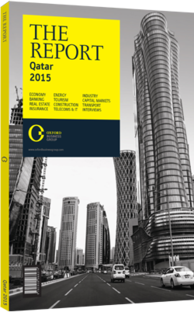Solar energy plays key role in Qatar's development goals
Qatar is globally known for its vast natural gas reserves and extensive oil reservoirs, with these powering the country’s economy, as well as its electricity and water sector. Yet now, the government and private companies are giving the time of day to a different – and abundant – energy source: sunshine. Indeed, with one of the world’s highest annual irradiation levels at 2190 KWh/sq metre and up to 3400 daylight hours, solar power is being seen as a potential long-term energy source for Qatar’s desalination projects and power generation. It is also now the subject of extensive research by the state’s leading science and technology institutes.
PANEL DISCUSSION: In December 2013 Mohammed bin Saleh Al Sada, the minister of energy and industry, announced that Qatar intended to generate 2% of its energy mix from renewable energy (RE) by 2020. The main emphasis of this will be solar, with press reports indicating that some 1740 MW of RE would have to come on-line in the next five years to meet higher electricity consumption, which is expected to reach 8700 MW. The incentive for this comes from a variety of sources, not the least of which is Qatar National Vision 2030 (QNV 2030). This ambitious plan sets targets for investment in human, social, environmental and economic development, with environmentally friendly, sustainable development – and therefore diversification away from hydrocarbons dependency – at its heart. This diversification is also set to take place in the energy mix. Several agencies are currently involved in the push into solar, in addition to the Ministry of Energy and Industry, the Qatar Electricity and Water Company and the state distribution and transmission outfit, Kahramaa. Another agency involved is the Qatar Foundation’s (QF’s) Qatar Environment and Energy Research Institute (QEERI). The institute has prioritised energy and water, with energy projects including solar energy, and particularly photovoltaic (PV) research. In late 2014 QEERI was involved in testing a number of existing PV technologies with an eye to adapting them for Qatar. Daytime temperatures are sometimes outside the tolerance range of available solar devices, while dust and sand are also hazards in the state’s desert environment.
STARTING UP: A first step towards the 2% goal was taken in 2014, with the announcement that pilot projects were begun as part of a 200-MW solar power programme. In June of that year, Qatar Solar Energy opened their 300-MW integrated PV manufacturing facility at the Doha Industrial Zone.
At roughly the same time, Qatar Solar Technologies (QST ec) – a joint venture between QF, Qatar Solar (a QF holding company), the international Solar World Group, and Qatar Development Bank – began construction of a polysilicon manufacturing facility for PV panels, along with a module fabrication facility and a 1.6-MW solar farm. “The total investment for the plant is around $1.5bn,” Khalid Al Hajri, the chairman and CEO of QST ec, told OBG. “As vertical integration progresses, we want to achieve 6.5 GWs of solar power production. The first phase of vertical integration will be achieved by 2015 and will have a power capacity of 300 MW.”
PRICE HURDLES: These ambitious goals do face some challenges, however, with one non-technical obstacle likely to be the low tariff structure for both water and electricity. This makes for extensive solar payback times, which are a crucial element in most solar markets, given initial capital costs. There is also a plentiful supply of natural gas for use on power and water generation, with the price of oil and gas currently in decline. However, if Qatar is to develop in a sustainable way based on knowledge rather than resources, then the development of the RE sector, some argue, still makes much sense. If it is able to finance major investments at this stage in new technologies for the particular conditions of the Middle East, Qatar could become a global leader in solar RE; that may prove more attractive in the longer term.
You have reached the limit of premium articles you can view for free.
Choose from the options below to purchase print or digital editions of our Reports. You can also purchase a website subscription giving you unlimited access to all of our Reports online for 12 months.
If you have already purchased this Report or have a website subscription, please login to continue.

